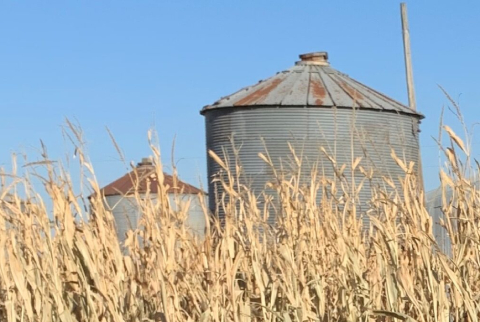By O. Kay Henderson (Radio Iowa)
The corn and soybean harvest in Iowa is well underway, but since there’s a federal government shutdown, the USDA’s weekly report on Iowa crops wasn’t issued yesterday (Monday), or last week.
Iowa Agriculture Secretary Mike Naig says he has a pretty good impression of the pace of the harvest after driving through the countryside, visiting with farmers, and spending several days helping with the harvest on his family farm near Cylinder. “Boy, if it’s fit, folks are really hitting it hard,” Naig said, “and I think we’re really taking a big chunk out of that soybean and corn harvest both.”
Naig indicated there appears to be variability in yields, however, as southern rust has appeared in parts of the state. “You’re hearing about some pretty dramatic yield reductions,” Naig said. “There are some areas of the state that were too wet. I’m hearing about some yield impact because of that as well and then I talk to folks that say it’s the best crop they’ve ever had.”
Naig is hearing soybean yields are strong. “Maybe the crop isn’t quite as good as we all thought it was going to be maybe in that mid-July timeframe, but we have a solid crop,” Naig said, “and, in fact, you have a lot of folks talking about: ‘Where are we going to store this crop?’”
Iowa farmers typically have about two-thirds of soybeans and one-third of corn harvested by mid-October.
Farmers worry the prices for corn and soybeans are being affected because buyers don’t have the weekly USDA information about harvest progress and conditions. Naig said it also means the October payments farmers get for enrolling land in the Conservation Reserve Program aren’t going out. “In this tight economy if you’re waiting for a payment of some kind and you just can’t flat out access it because of a government shut down that’s wrong,” Naig said, “and it’s bringing instability…where we need certainty this time of year.”
With Farm Service Agency offices closed, farmers cannot submit the paperwork for operating loans that some might need to buy livestock, farm equipment, fuel or fertilizer. The loans may also be used to cover family living expenses.




